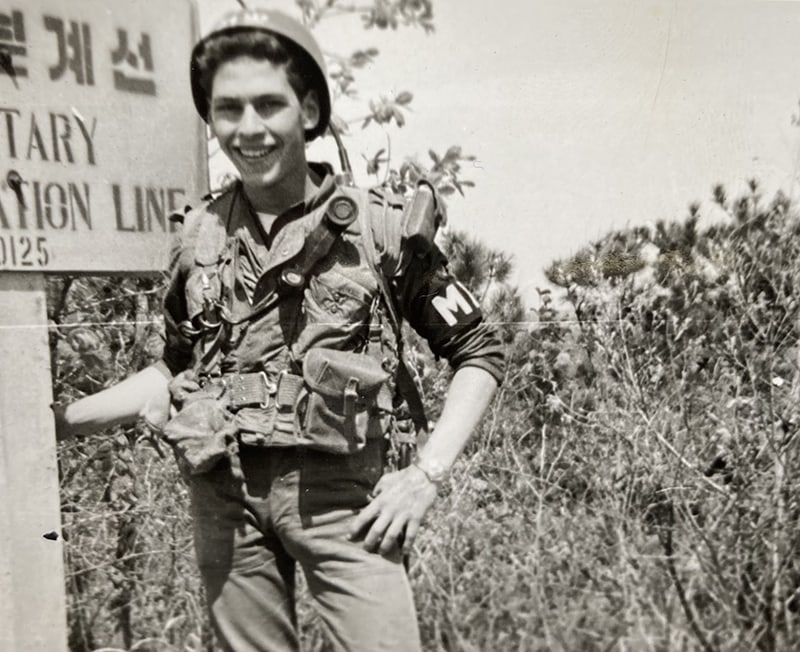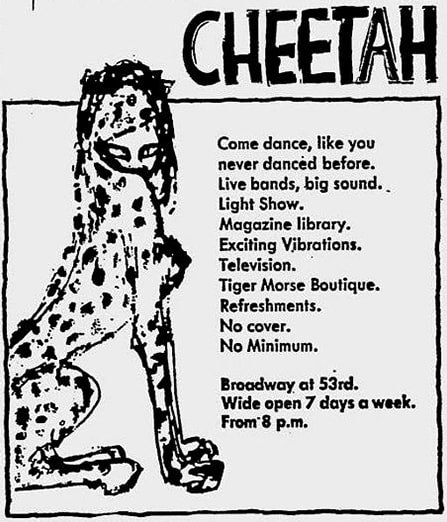It was the late summer of 1966, and I was still a teenager when the Army rotated me back into the world (stateside), specifically, the Whitehall Street Induction Center at 39 Whitehall Street on the lower tip of Manhattan. What I did not fully appreciate at the time was that in being in the Army, you were really isolated from the outside world, especially when stationed overseas. The only news available to us was the Stars and Stripes newspaper, a readable but biased periodical published by the US military. Usually on the front page was a picture of a disheveled longhaired bearded hippie violently trying to tear down the American flag. To say we were removed from the true American experience was an understatement. In that sense it was like being in prison without the TV room.
There are no military bases in Manhattan, so the few troops stationed here lived off base. I moved in with an old roommate who had a fifth floor studio apartment in a walk up on East 25th Street. I was a sergeant E-5 with over two years in service and with a housing allowance. Essentially, I was making enough money to cover my expenses. I only worked Monday through Friday from 7 am to early afternoon. It was good duty considering I was still in the Army. It was almost like a regular job. The only weird aspect was in the morning when I had to walk up the stairs into the Whitehall Street Induction Center I had to maneuver through a crowd of antiwar protesters. It was disconcerting.
 Ken Sander, 1966.
Ken Sander, 1966.
I started going with my new Army buddies to the Peppermint Lounge. It was located on the eastern fringe of Times Square. It was kind of a halfway house for me. Not really hip anymore, with a straight crowd and danceable music. This was my initial Friday night hangout for my first months back stateside. As my time grew short for my Army stint, my re-education began as I picked up on the threads of my previous civilian life.
I had missed many of the cultural changes, I mean, who were the Rolling Stones, and that Mick Jagger sure looked weird the way he danced on stage. Overseas, thanks to my little red transistor radio, I was able to tune into Armed Forces Radio. It was a limited, edited Top 40 format, but it made me aware of some of the new music. I never was into folk music and to me the beatniks were an older generation. This new music, the Mamas & the Papas, the Byrds, Vanilla Fudge, Sam and Dave, Van Morrison, and Buffalo Springfield; that resonated with me.
May of 1967, I received my honorable discharge and started job hunting. I quickly landed a job at Olivetti-Underwood at One Park Avenue, between 32nd and 33rd Street. Now making more money, I moved into a small one-bedroom apartment with a nice-sized kitchen at 233 Lexington Avenue, just south of 34th Street and around the corner from my job. The apartment was on the sixth floor and the elevator was a French-style with an accordion-like collapsing gate with an inner gate on the elevator and an outer gate on each floor. It was a very cool elevator, watching floor after floor from inside while I went up or down. The apartment cost $100, which had to be paid in cash every month, and considering the apartment itself and the location it was a fairly good deal.
As distance grew between my military service and my new life, I started to see world politics and culture in a different perspective. It was becoming apparent to me that I had been served up some very biased bullsh*t.
The Peppermint Lounge had become passé. I upgrade to the Cheetah on 53rd Street and Broadway, where the diverse clientele was truly spectacular. The 2,000-person-capacity hall had fur on the walls and a few thousand colored lightbulbs flashing into an array of light patterns that reflected off shiny aluminum sheets. The Cheetah booked bands such as Pink Floyd, the Velvet Underground, Tiny Tim, Richie Havens, and Curtis Knight and the Squires, featuring a pre-fame Jimi Hendrix. The show Hair was performed at the Cheetah before becoming a major production on Broadway.

Little Richard was an employer of Jimi’s in the earlier days. Little Richard and Jimi appeared in a show starring Soupy Sales at the Paramount in Brooklyn New York. Jimi and Richard clashed over the spotlight, lateness, and other issues. In early July 1965, Richard’s brother Robert Penniman “fired” Jimi. Jimi’s story was that he had not been paid “for five-and-a-half weeks” and was owed $1,000. Hendrix then rejoined the Isley Brothers’ band (he had played with them previously). The Isleys really appreciated Jimi and even bought him an expensive guitar because Jimi was always broke and hocked his guitar many times. To Hendrix, these gigs were just jobs. He disliked the chitlin’ circuit R&B acts and the sameness of their matching suits, constant onstage smiles and choreographed dance routines.
Later in Jimi’s career he was doing a show that also had Little Richard on the bill. He asked Richard for his back pay and Little Richard just said, “you missed the bus.” Jimi did miss more than his share of tour buses.

All this is in hindsight, as I was unaware of Jimi Hendrix at that time. I liked the Cheetah and my insertion into this new culture was almost seamless. I meet a cool sexy hippie chick and she drew a beautiful psychedelic design on the back of my Army fatigue jacket. That turned my Army-issue field jacket into a fashion statement. Another girl, Sandy, introduced me to weed, but I have to say I did not feel a thing until the third occasion.

On Saint Marks Place (on Eighth Street between Third and Second Avenue) I discovered the Electric Circus. Wow, what a cool concert and hangout place. That was my first taste of black light; everything white was neon-like under the lighting. White sneakers, bra straps, even the elastic on my underpants. Teeth looked funny too. The place smelled like patchouli oil.
Now I was having fun going to concerts, buying albums, and listening to FM radio. Arthur Brown’s “Fire” (“I am the god of hell fire!”) was on the radio. He was on a US tour when I got to see him with his burning helmet. He looked like his hair was on fire. it was amazing, but also it looked dangerous. Unfortunately, his tour had to be cut short because of burn injuries. No surprise there, but still, it was The Crazy World of Arthur Brown.
In the spring of 1968, I began to dislike my job at Olivetti-Underwood. It was boring and routine, and that was not me anymore. My immediate supervisor, Frank, an older guy, started to share too much information about his lifestyle. He told me about his boyfriend, who was about to get out of jail, and mentioned how much I would like him. I told him that was not my scene. A few weeks later, late one Saturday afternoon around four-ish, the lobby intercom rang, and it was Frank and his friend. He said, “come down and have a drink with us at the bar next door.” I felt I had to join them.
Frank’s friend was in his thirties and a very hard-looking dude. After a few minutes of small talk, he said, “let’s go back to Frank’s place.” I said, “no, I have other plans,” and this guy replied, “Do you think you are better than us?” “No,” I answered, “it is just not my thing.” He leaned over close to me and said quietly, “get the fu*k off that bar stool before I knock your ass off it.” I was stunned and it took a moment for me to realize what had just happened, but I knew I was out of my depth. I got up and silently walked out of the bar, relieved to step into the afternoon sunlight.
The next Monday Frank was still angry with me, but I told him I meant no harm and it was just not my scene, and he seemed to calm down. I did not read it well. I had made an enemy. A couple of weeks later gay porn advertising arrived in my mailbox. I thought it was some kind of mistake. But then the junk mail increased more and more till my mailbox was stuffed, overflowing daily. The sheer volume was unbelievable. I wondered what my mail carrier thought of me. Of course, I figured out that it was Frank’s doing. I do not say anything to him, and I left Olivetti.
Around this time my sister Ellen broke through and became a famous rock writer. One Sunday afternoon she got invited to Laura Nyro’s penthouse apartment on West 79th Street. David Geffen, her manager, was there. She had a patio/balcony with a wonderful view, and served us Bloody Marys and shrimp cocktails. It was a lovely, sunny warm afternoon and Laura was charming.
Ellen and I started to talk about us moving to Los Angeles and getting a place. I was game; why not? A change of address is always a new adventure and certainly a way to end the barrage of porn advertising. Junk mail would not follow me.
Two weeks later I answered an ad in the Village Voice to share gas expenses for a cross-country drive to San Francisco. My late friend Jonny Lane drove me to the meeting spot in New Jersey and when I got there, I found out that I was one of five people stuffed into this old Rambler station wagon. It was a horrible nonstop crowded and uncomfortable slow drive across country. As we drove just south of Chicago on I-80 we heard there are violent protests at the Democratic National Convention. Relegated to the center of the back seat with my feet elevated on the hump, the ride did not get better. I comforted myself with the thought that this would pass, and to just hang on, this won’t be forever, it will end. The Army taught me that. I was happy to arrive in San Francisco and leave that experience behind. My share for the ride was $41.
The next day I hopped a Greyhound bus to Los Angeles. On the way, Customs stopped us and boarded the bus. They walked up the aisle, stopped by me, and asked me where I was from. I was surprised and told them, New York, and they nodded and moved on. Never had that happen to me before or since.
I arrived in LA and called Ellen from the bus station downtown. “When are you coming?” I asked, and she replied that she didn’t know yet. I asked, “Where should I stay?” She said to call her back in five minutes. I did, and she said a friend of hers would pick me up in a few minutes. Her friend was Pete Johnson and he was the Los Angeles Times’ rock critic.
To be continued.
Header image: The Whitehall Street Induction Center, New York, built in 1884.

0 comments